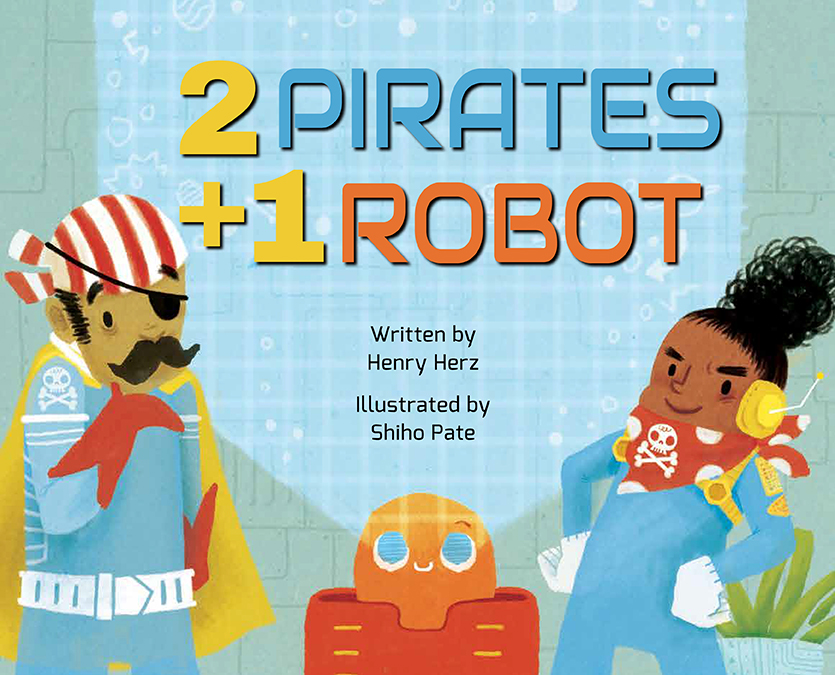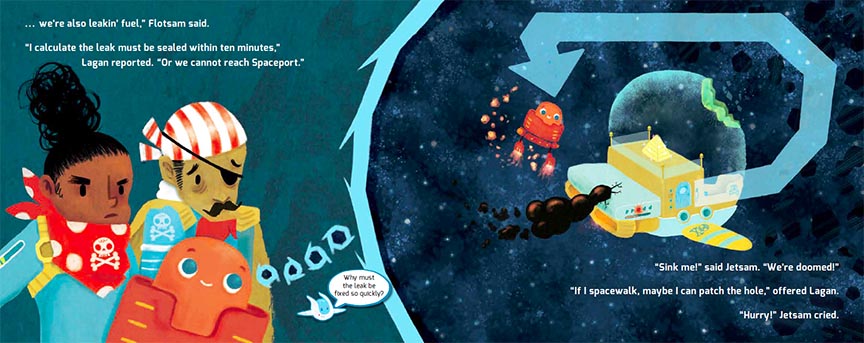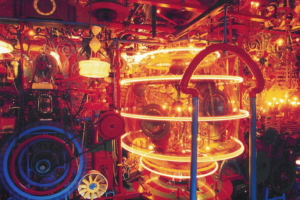
GUEST BLOGGER HENRY HERZ
Helpful robots
What does 2 pirates + 1 robot equal? Tons of fun, plus lots of adventure, times masses of laughter! Robot Lagan might not agree with the mathematics of that equation, but in this thrilling, hilarious adventure about the things in life that really matter, young readers will soon learn that it absolutely adds up. This tale of space pirates and their robot is packed full of facts about math and science–and robots!
Space pirates Flotsam and Jetsam quickly learn that having a robot help them do difficult or dangerous tasks is quite handy. Here on Earth, humans have learned the same thing.
Robots and biomimicry
Robots are machines that do jobs for humans. They have computers instead of brains to help them complete tasks, solve problems, and respond to changes in their environment. Because Nature did such a good job designing animals, engineers sometimes build robots that copy the abilities of animals. That’s called biomimicry. Biomimicry enables robots to perform tasks that are too difficult or too dangerous for people. Here are two examples:
The Legged Squad Support System was designed to mimic a horse’s ability to carry supplies over uneven terrain. This 5.5-foot tall, 1,300-lb., four-legged robot can haul 400-lb. loads. And it doesn’t need food or water!
The GhostSwimmer looks like a shark. This five-foot long, 100-lb. robot swims by swinging its tail. It can dive to a depth of 300 feet to perform surveillance, gather tidal data, or inspect the hulls of ships.
Design robots that mimic animals – engineering design challenge
The topic of biomimicry offers a great way for you to combine STEM with language arts for your students. Ask your students to do the following analysis and communication steps:
- Identify a task that is too difficult or dangerous for a human to do. Example: doing a safety inspection of the underside of a high bridge.
- List the abilities needed to perform the task
- Determine what type of animal could more easily do this task. Example: a hummingbird
- Sketch an image of what a robot that mimics that animal’s ability might look like.
- Label the sketch to explain how the robot operates
The student presents the challenge and their solution to the class.
Henry Herz is a children’s book author and anthologist. He’s written the following children’s books: MONSTER GOOSE NURSERY RHYMES; WHEN YOU GIVE AN IMP A PENNY; MABEL & THE QUEEN OF DREAMS; LITTLE RED CUTTLEFISH; CAP’N REX & HIS CLEVER CREW; HOW THE SQUID GOT TWO LONG ARMS; ALICE’S MAGIC GARDEN; GOOD EGG AND BAD APPLE; 2 PIRATES + 1 ROBOT; THE MAGIC SPATULA; and I AM SMOKE. Henry also wrote the children’s stories: “Pay the Piper”, “Born to Dance”, and “Maria & Maslow” (Highlights for Children) and “A Proper Party” (Ladybug Magazine). Henry is the co-editor of COMING OF AGE (middle grade anthology, Albert Whitman & Co.) and THE HITHERTO SECRET EXPERIMENTS OF MARIE CURIE (young adult anthology, Blackstone Publishing).
- Website: http://www.henryherz.com/
- Twitter: @HenryLHerz












Leave a Reply
Your email is safe with me.